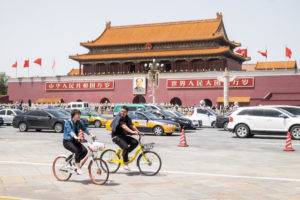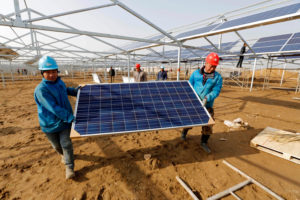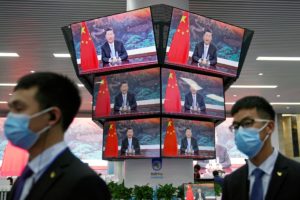China’s domestic ratification of the second biggest climate deal after the Paris Agreement – the Kigali Amendment to the Montreal Protocol, which governs super-polluting hydrofluorocarbons (HFCs) – is a welcome sign, including of Beijing’s desire to continue to keep an open mind when it comes to the possibility of future US–China climate cooperation.
The 2016 Kigali Amendment was the first in a series of sectoral deals on climate change that followed the establishment of a framework to reduce countries’ carbon emissions through the 2015 Paris Agreement. With the amendment, the world agreed to phase out HFCs, which are used in certain types of refrigerants and have a global warming potential 1,000 times greater than carbon dioxide.
Fully implemented, the Kigali Amendment could shave up to 0.5C off the average global temperature increases that are predicted for the end of the century. That is a very big deal, especially for the world’s most vulnerable nations. China’s ratification is hugely important, since China is the world’s largest consumer and exporter of HFC products, accounting for 60% of the world’s refrigerators and more than 80% of its residential air conditioners. The amendment commits China to freezing HFC production and use by 2024 and reducing HFC usage by half by 2040. That’s an even steeper trajectory than China has currently signed up to in terms of its carbon reductions.
The Kigali Amendment, like the Paris Agreement, in many ways also owes its success to the commitment of President Xi and President Obama to cooperate on the common challenge of climate change. The two presidents first agreed to take action on HFCs at the 2013 Sunnylands Summit, a year before their landmark 2014 joint climate announcement. In what is a critical year for global climate action, China’s ratification and implementation of the amendment will give a welcome boost to global climate mitigation efforts.
It is therefore an important signal, coming on top of the launch this month of China’s carbon trading system, that China continues to act on climate change, and that, despite the current tensions between the two powers, joint action on climate change remains both possible and essential.
Despite current tensions between the two powers, joint action on climate change remains both possible and essential
US President Joe Biden is pursuing an ambitious set of domestic climate goals and is committed to supporting greater global ambition. He has submitted the Kigali Amendment to the US Senate for consideration, but the United States is yet to ratify it. That the Trump administration never chose to do so, despite the support of American industry and a rare bipartisan consensus on the issue, was a sign of just how intransigent that administration was on climate change – and removed pressure from China and others to also move forward with the amendment. China’s announcement will also put critical pressure on India, the second largest HFC emitter, to ratify the amendment.
Now ratified, the amendment will take effect in China in mid-September. This is the final step in a process that was confirmed by President Xi Jinping in a telephone call with German Chancellor Angela Merkel and French President Emmanuel Macron on the eve of US climate envoy John Kerry’s visit to Shanghai in April. This denied the US the ability to claim the credit, but was a welcome signal that progress was possible.
Nevertheless, analysts should track the impacts of the Kigali Amendment ratification on China’s export of HFC refrigerant products, especially to countries in the Belt and Road Initiative (BRI). There is a risk that efforts to reduce domestic usage could result in more exports, as happened when the amendment was initially adopted in 2016.
As COP26 in Glasgow in November draws nearer and climate impacts multiply around the world, demands must grow for still tougher action from the world’s biggest emitters – including China. The UK government that is hosting the conference has invited both President Biden and President Xi to attend. Attendance on its own matters little to the climate, of course. Fresh commitments on carbon reductions are what counts, for any country to demonstrate its bona fides.
While President Xi recently pledged that China’s coal use will peak in 2025, there is now increasing talk of a domestic coal moratorium or a halt to the overseas financing of coal, a step that both Japan and Korea have already taken. This would be a big step, and must be matched with a commitment by China to also peak its carbon emissions by 2025, putting it firmly on track to meets its pledge of carbon neutrality by 2060. So, while the ratification of the Kigali Amendment and the launch of China’s emissions trading system are two welcome steps, there is still more to do.









